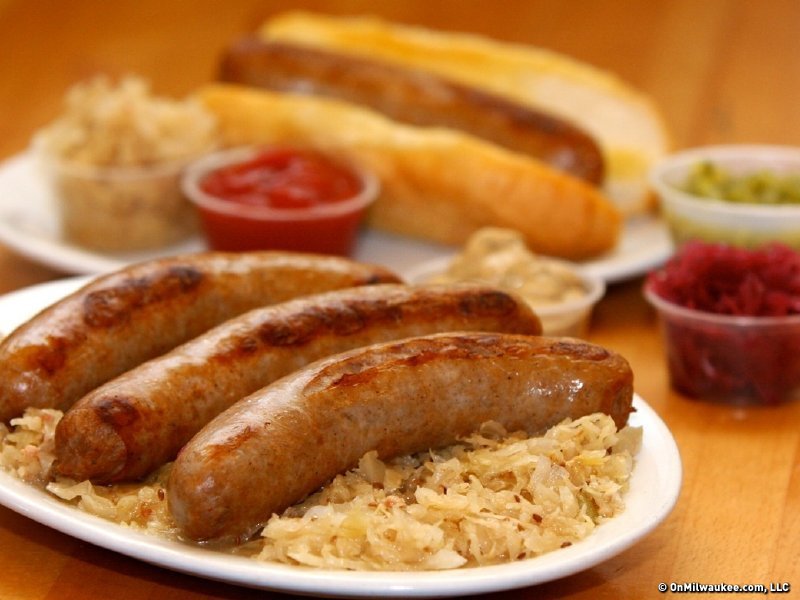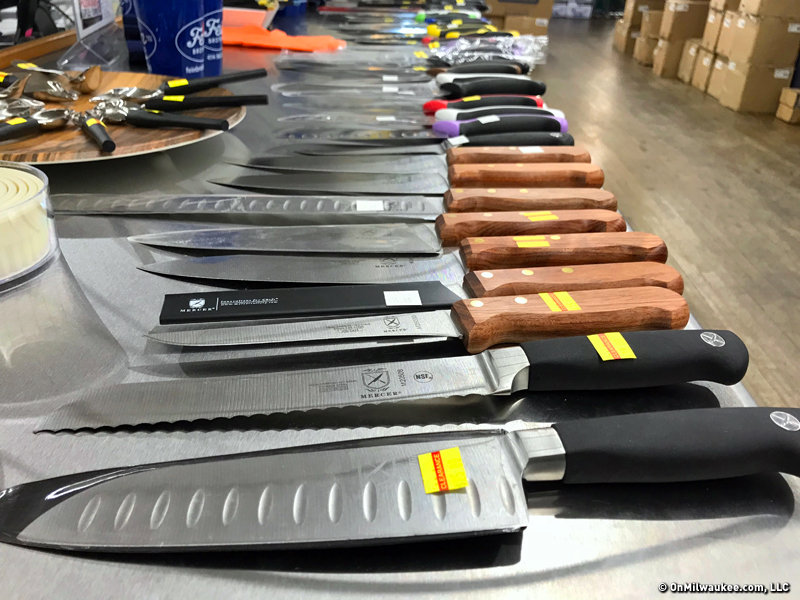For the sixth straight year, October is Dining Month on OnMilwaukee.com, presented by Concordia University. All month, we're stuffed with restaurant reviews, delectable features, chef profiles and unique articles on everything food, as well as the winners of our "Best of Dining 2012."
If you'd like to take stock of how serious Milwaukee chefs are about their food, you might want to begin by counting their collections of Mason jars.
Walk into numerous restaurant kitchens and you'll find shelves stacked with a wide range of pickles, canned fruits, vegetables and jams. And these canned collections are a sign of the times. As restaurants move toward a more dedicated commitment to year-round local sourcing, it's become a necessity to extend the harvest by capturing seasonal flavors in crocks and jars.
But, the advantages of preserving goes well beyond the desire to support the local food shed. Custom-made condiments provide chefs with an entirely new palate of flavors with which to work. Putting up pickles, preserves and the like gives chefs control over not only ingredients and flavors, but how they might eventually be integrated into their restaurant menus.
Dan Jacobs of the soon-to-open Wolf Peach says that canning and preserving is a vital element in the operation of the restaurant.
"Preserving plays a large part in what we do. Any time we need to add acidity or a crunch factor we see what we have available. It's a lot of fun to have a pantry full of pickles to dig through. Sometimes the contents of the pantry drives the flavors of a dish."
And he's not joking. He and his staff spent days canning between 150 and 200 pounds of tomatoes this year.
"We saved all the preserves, pickles and peeled and seeded tomatoes from what we harvested at the Family Farm in Cedarburg this year. Our farm is going to grow two acres so we'll have quite the harvest to process next August."
While Ross Bachhuber, executive chef and owner of Odd Duck in Walker's Point, says that they don't have enough room at the restaurant to do a significant amount of canning and preserving, he says they make their own pickled bar snacks, as well as shrubs – concentrated drinking vinegars infused with fresh fruit and vegetables – for use in craft cocktails.
"We do a lot of 'quick pickling' for components on dishes and garnishes," he says. "We also make house preserves. The preserving process allows us to prolong the amount of time we can use produce that we get in seasonally."
And the uses for preserved items are nearly endless. Pickles enliven charcuterie plates and sandwiches. House canned vegetables add layers of flavor to roasted or braised meats, and preserved fruits are easily transformed into excellent fresh-tasting sauces and desserts. Few would know better the versatility of such items than Dan Van Rite, executive chef at Hinterland Erie Street Gastropub, a restaurant known for their house-made charcuterie and creative use of preserved items.
"Right now we have tomatoes, radish pods, garlic scapes, peppers, cucumbers, wild blackberry mostarda and chow chow, plus a variety of other things," Van Rite reports. "During the winter we will have spring and summer items to mix in with a more monotonous winter menu. It will help push some menu items over the top."
Van Rite keeps his pickles in a "pickle closet" adjacent to the lounge area and not far from the kitchen. He hopes to double his production of canned goods next year.
Similarly, when planning out his restaurant, Chef Thomas Hauck of Circa 1880 built a special basement prep kitchen and storage area for canned goods.
"At Circa we have anywhere from 15 to 20 different pickled or preserved things in our pantry," he says. "I love to pickle things at the peak of their season and then use them to complement the raw version. Then you can go in a completely different direction and use them in the opposite season. It a nice complement to a dish in the dead of winter to use some of the pickled ramps that you stored away in our brief, but welcomed spring."
Despite the new-found popularity of canning, it's worthwhile to note that, like many food trends, the practice isn't something new at all. Canning has been around since the dawn of the 19th century, when, at Napoleon's request, Frenchman Nicolas Appert developed a method of sealing food in bottles to prevent spoilage on long military campaigns.
By the 1890s farmers and produce dealers like Albert Landreth and William Larsen were experimenting with methods for canning the plentiful green pea crops being grown in Manitowoc, according to author Fred Stare. And by the early 1900s, Wisconsin's commercial canning industry was booming.
So, it shouldn't be a surprise that so many Midwestern chefs learned the art of preserving from their mothers, grandparents or relatives. The tradition of canning in the Midwest runs deep.
Bachhuber says he began helping his mom with canning chores around the time he was about 5 years old, and Van Rite has fond memories of learning the art of preserving from his grandmother, who stirred cinnamon bears into her homemade canned applesauce to lend it flavor and turn it a cheery red color.
"I first learned to can and preserve while living on my aunt's horse farm in Door County," Jacobs recalls. "They didn't have a huge garden, but whatever she grew had to last the winter ... lots of tomatoes ... paste, sauce, whole peeled."
The culture of preserving what is available infuses the philosophies of these Milwaukee restaurant kitchens. But, as the chefs know, the value of pickling and canning also has everything to do with flavor.
"A lot of times pickling something adds another dimension of flavor to a dish, a little something acidic," Bachhuber explains. "We pickle a lot of stuff, especially eggs, for bar snacks because that salty pickled flavor is perfect with a beer."
For Hauck, the opportunity to creatively complement what's in season is one of the chief advantages of canning.
"Right now we are using a lot of spicy pickled fennel that goes with our foie gras, and pickled heirloom cherry tomatoes that go into the pita panzanella for our lamb dish," he explains. "The texture of the fennel and the heat complement the anise flavor so well and works well with the foie."
So, as the days grow shorter and the wind grows brisk, it's worthwhile to pay attention to the innovative ways Milwaukee chefs are using their stashes of delicious custom-canned items. Turns out pickles and preserves can be just as interesting as anything else on the plate.
As a passionate champion of the local dining scene, Lori has reimagined the restaurant critic's role into that of a trusted dining concierge, guiding food lovers to delightful culinary discoveries and memorable experiences.
Lori is an avid cook whose accrual of condiments and spices is rivaled only by her cookbook collection. Her passion for the culinary industry was birthed while balancing A&W root beer mugs as a teenage carhop, fed by insatiable curiosity and fueled by the people whose stories entwine with every dish. Lori is the author of two books: the "Wisconsin Field to Fork" cookbook and "Milwaukee Food". Her work has garnered journalism awards from entities including the Milwaukee Press Club. In 2024, Lori was honored with a "Top 20 Women in Hospitality to Watch" award by the Wisconsin Restaurant Association.
When she’s not eating, photographing food, writing or planning for TV and radio spots, you’ll find Lori seeking out adventures with her husband Paul, traveling, cooking, reading, learning, snuggling with her cats and looking for ways to make a difference.







